The U.S. Navy has revealed more details about its plans for its future fleet of Boeing MQ-25A Stingray tanker drones and how it will integrate them into its carrier air wings attached to squadrons flying the E-2C/D Hawkeye airborne command and control aircraft. This comes as the service is working to stand up its first MQ-25A unit, Unmanned Carrier Launched Multi-Role Squadron 10, or VUQ-10.
The new information comes from a draft environmental impact assessment regarding the construction of new facilities at Naval Base Ventura County, in Point Mugu, California, which the Navy posted online recently. These kinds of assessments are a routine part of the process of approving major new additions to U.S. military bases, which also includes input from various other federal, state, and local stakeholders.
“The Navy proposes to establish facilities and functions at Naval Base Ventura County (NBVC) Point Mugu, California to support West Coast home basing and operations of the MQ-25A Stingray Carrier-based Unmanned Air System (Stingray CBUAS),” the report says. “Under the Proposed Action, the Navy would home base 20 Stingray CBUAS; construct a hangar, training facilities, and supporting infrastructure; perform air vehicle (AV) maintenance; provide training for air vehicle operators (AVOs) and maintainers; conduct approximately 960 Stingray CBUAS annual flight operations; and station approximately 730 personnel, plus their family members.”
The largest single planned addition is a new hangar and associated ramp and taxiways, at the northern end of the base attached to Naval Air Station Point Mugu’s Runway 03/21. NAS Point Mugu is part of the larger Naval Base Ventura County.
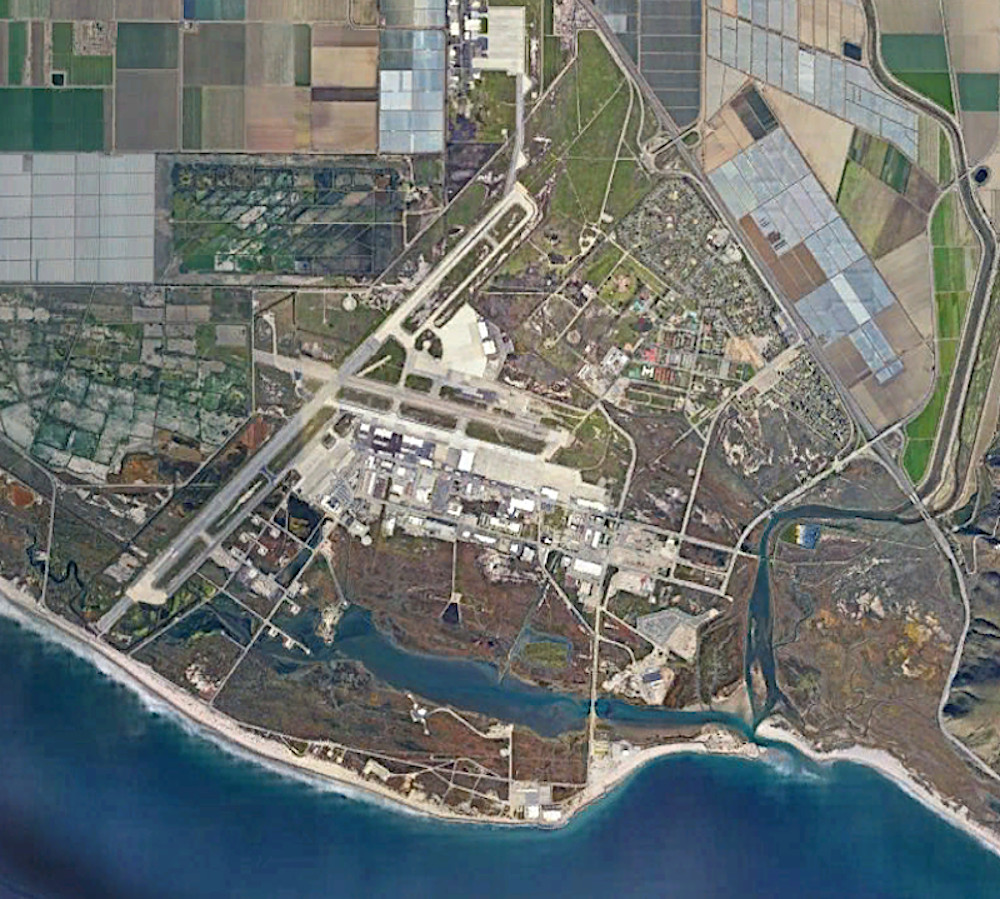
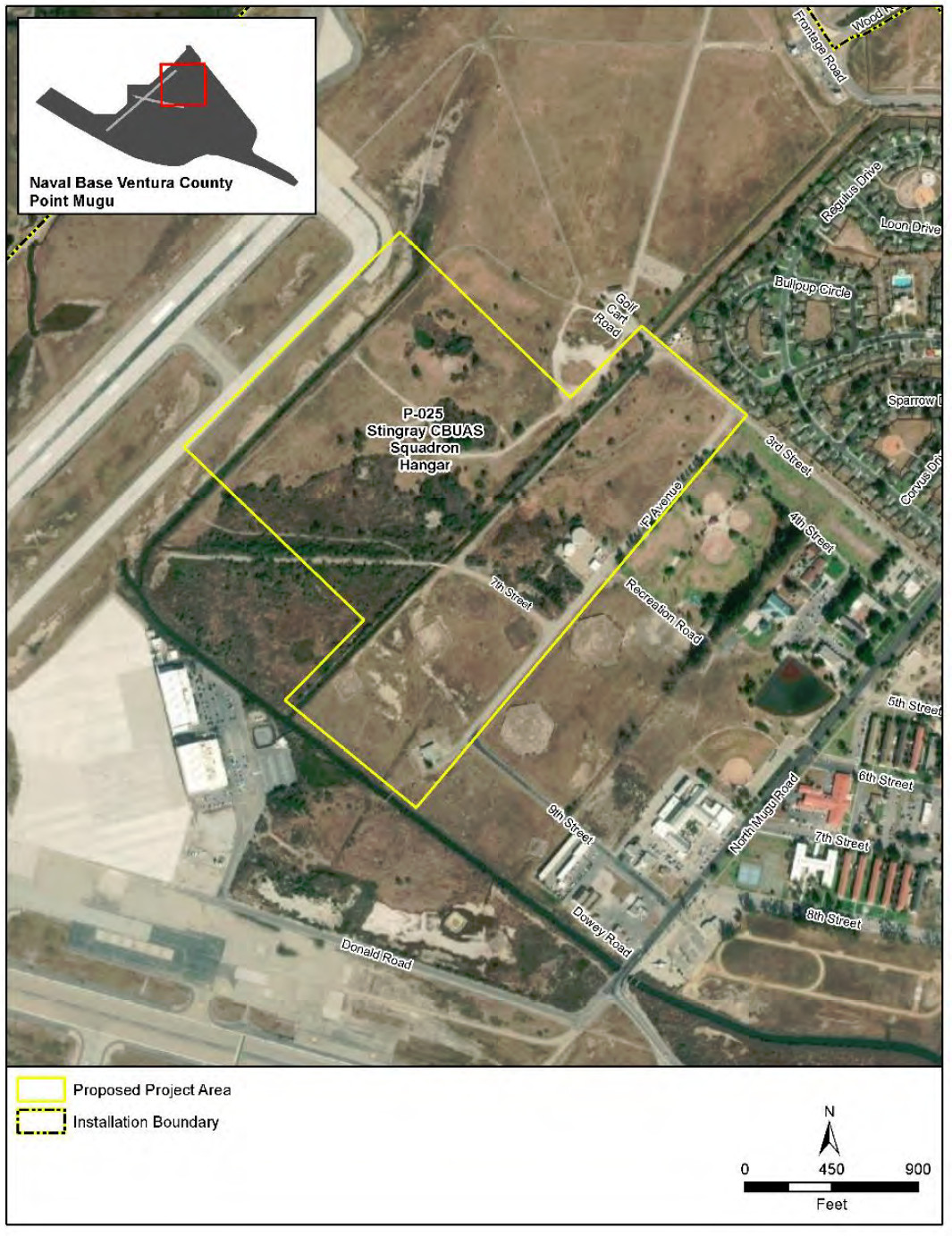
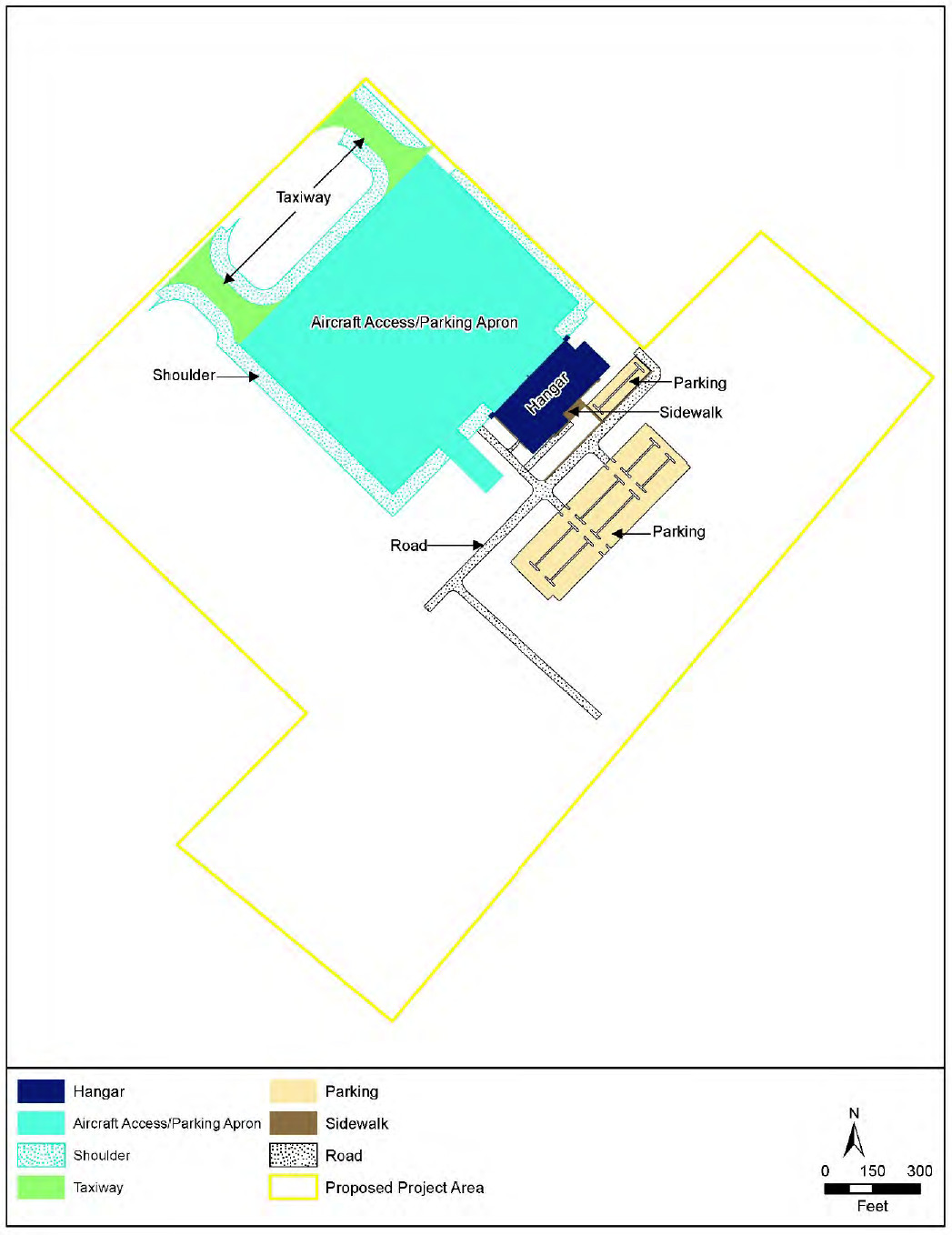
In addition, there are plans for a new multi-story training facility for MQ-25 squadron personnel and a simulator facility to train operators for the drones. Point Mugu will also require the expansion of a battery shop on base to accommodate “lithium-ion battery maintenance and storage,” as part of the proposed basing plan.
An existing hangar, Hangar 365, is set to receive minor renovations to support VUQ-10 and its initial cadre of drones, as well as provide space for some maintenance tasks. The Navy is hoping to begin construction of the new and expanded facilities in 2023 and have that work completed by 2025.
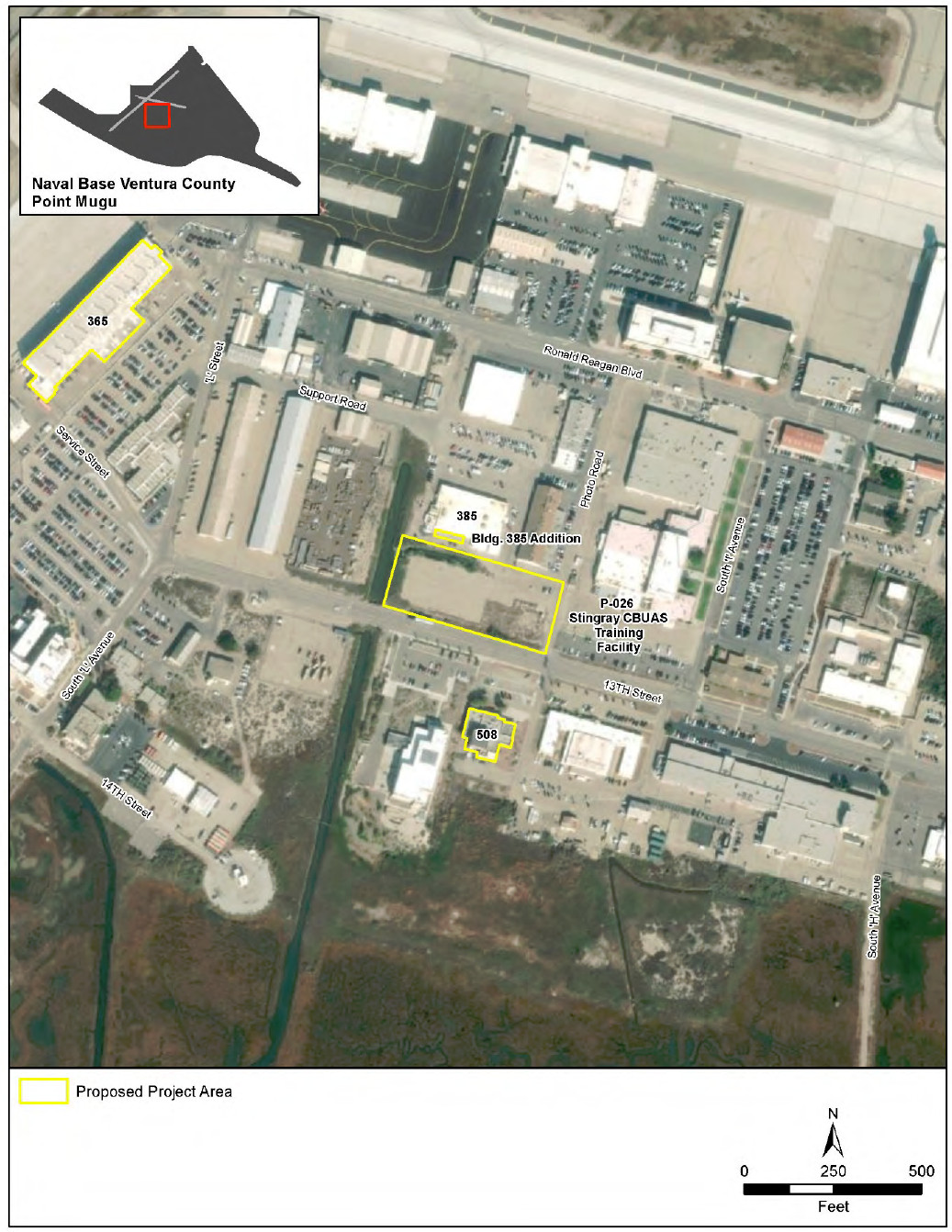
Beyond the construction plans, the report also outlines a number of important points regarding the Navy’s plans for its future MQ-25 force. The squadron at Point Mugu, which will be in addition to VUQ-10, is set to be the first of at least three operational Stingray units, one more being based at a yet-to-determined location on the East Coast of the United States and another forward-deployed in Japan.
From these locations, the drones will be situated to best support U.S. carrier strike group operations originating from the East and West Coasts of the United States, as well as Japan, where the Navy maintains a forward-deployed aircraft carrier. This will also help position the MQ-25s to best support carrier strike group training, including pre-deployment Composite Training Unit Exercises (COMPTUEX), as well as other exercises. Point Mugu is particularly well-positioned near an expansive collection of training ranges off the coast of southern California that the service regularly uses for various drills, carrier-related and otherwise.
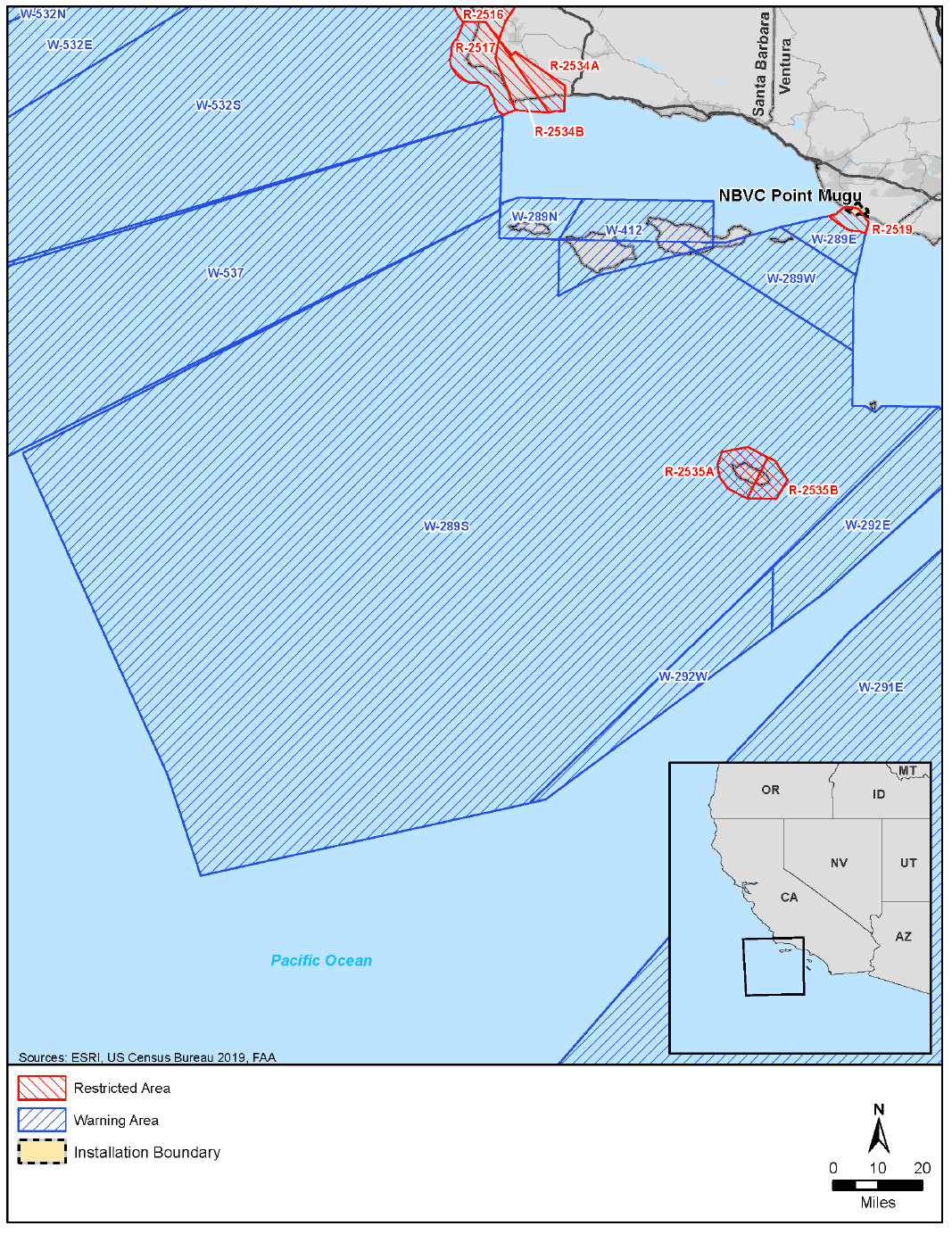
From the environmental assessment report, we also now know that the Navy plans for a typical MQ-25 squadron to have four detachments. The Navy has yet to specify exactly how many Stingrays a typical detachment will have. A briefing officials from the service presented at the Tail Association’s annual symposium earlier this year, which was held online due to the ongoing COVID-19 pandemic, said that, by 2030, a typical carrier air wing could have between five and eight of the drones.
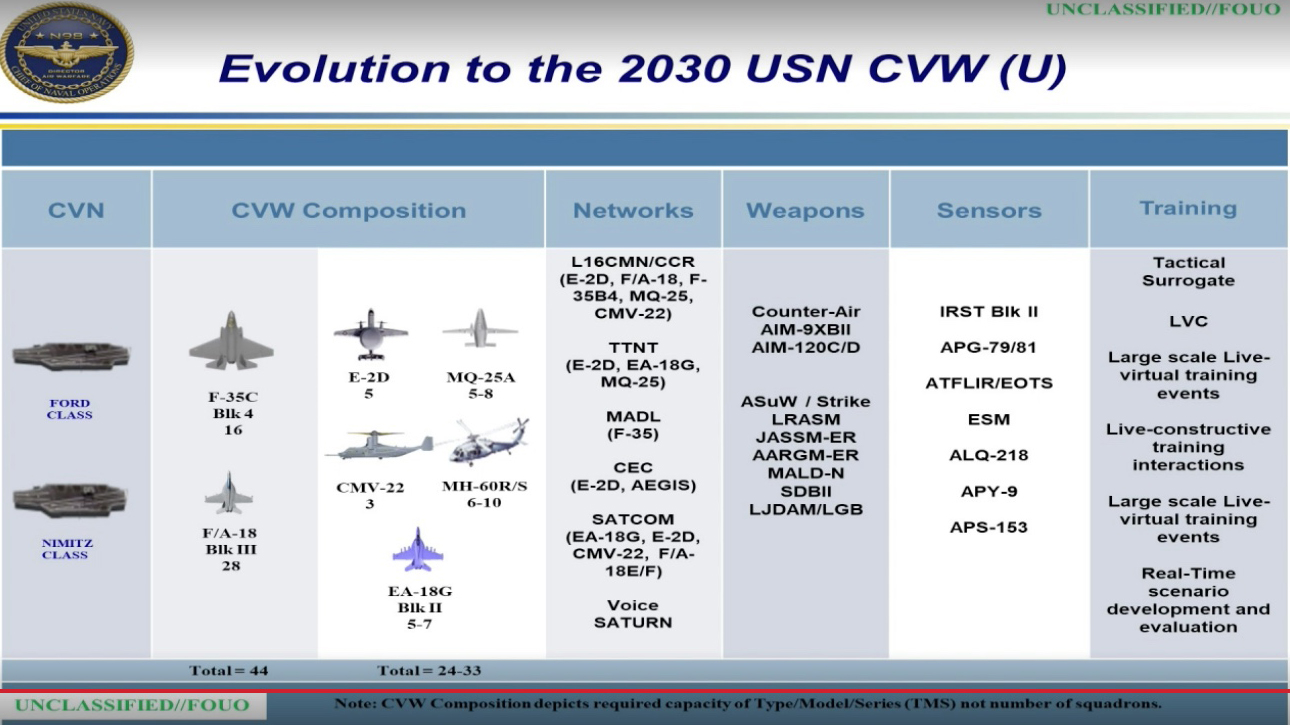
Regardless, these detachments will provide aerial refueling support to carrier air wings, a mission presently performed by F/A-18E/F Super Hornets equipped with buddy refueling stores. The tanker drones will allow those jets to focus on other missions, as well as reduce the overall strain on those aircraft, while, at the same time, significantly extending their reach. They will also be able to refuel Navy F-35C Joint Strike Fighters as they begin to deploy as part of the service’s carrier air wings. In addition, the Stingrays will have a secondary intelligence, surveillance, and reconnaissance capability from the start and could very well gain the ability to conduct other missions as time goes on.
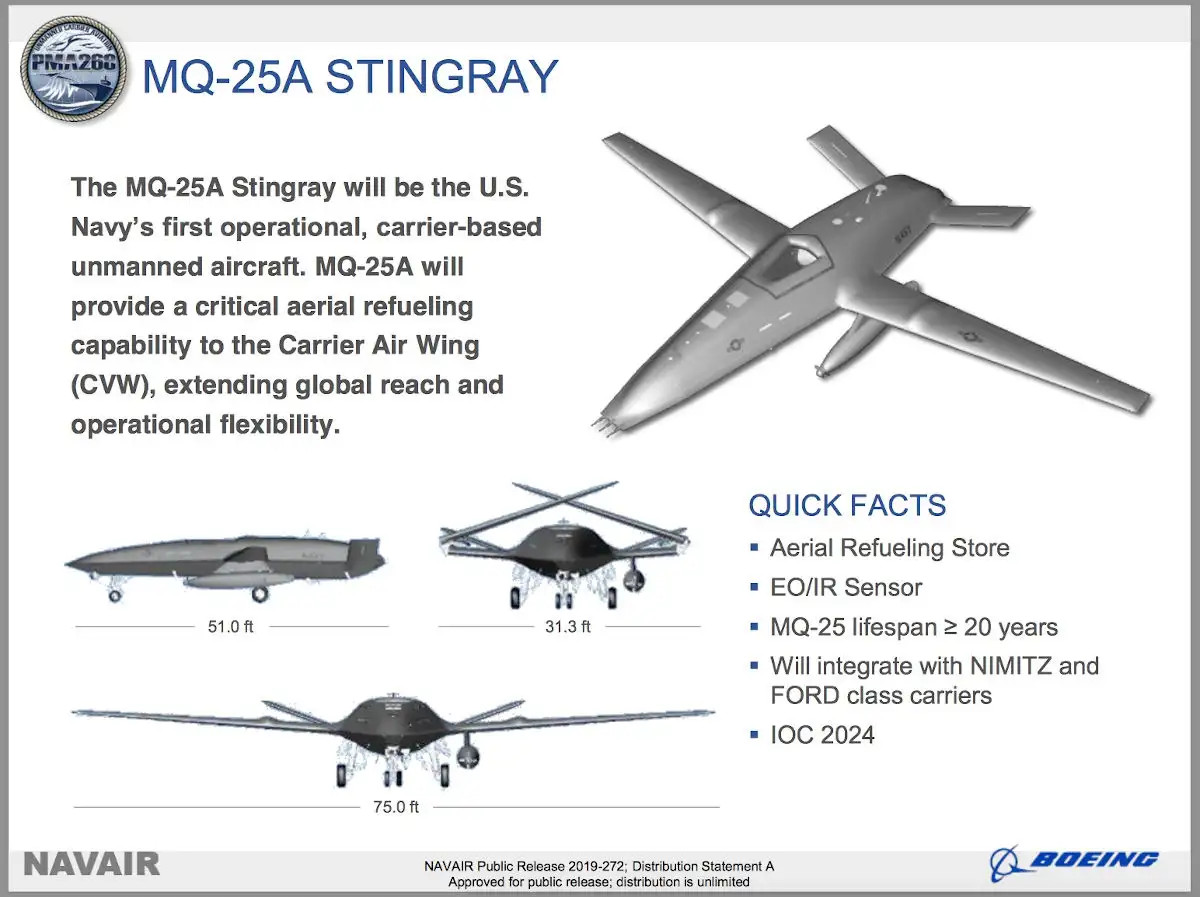
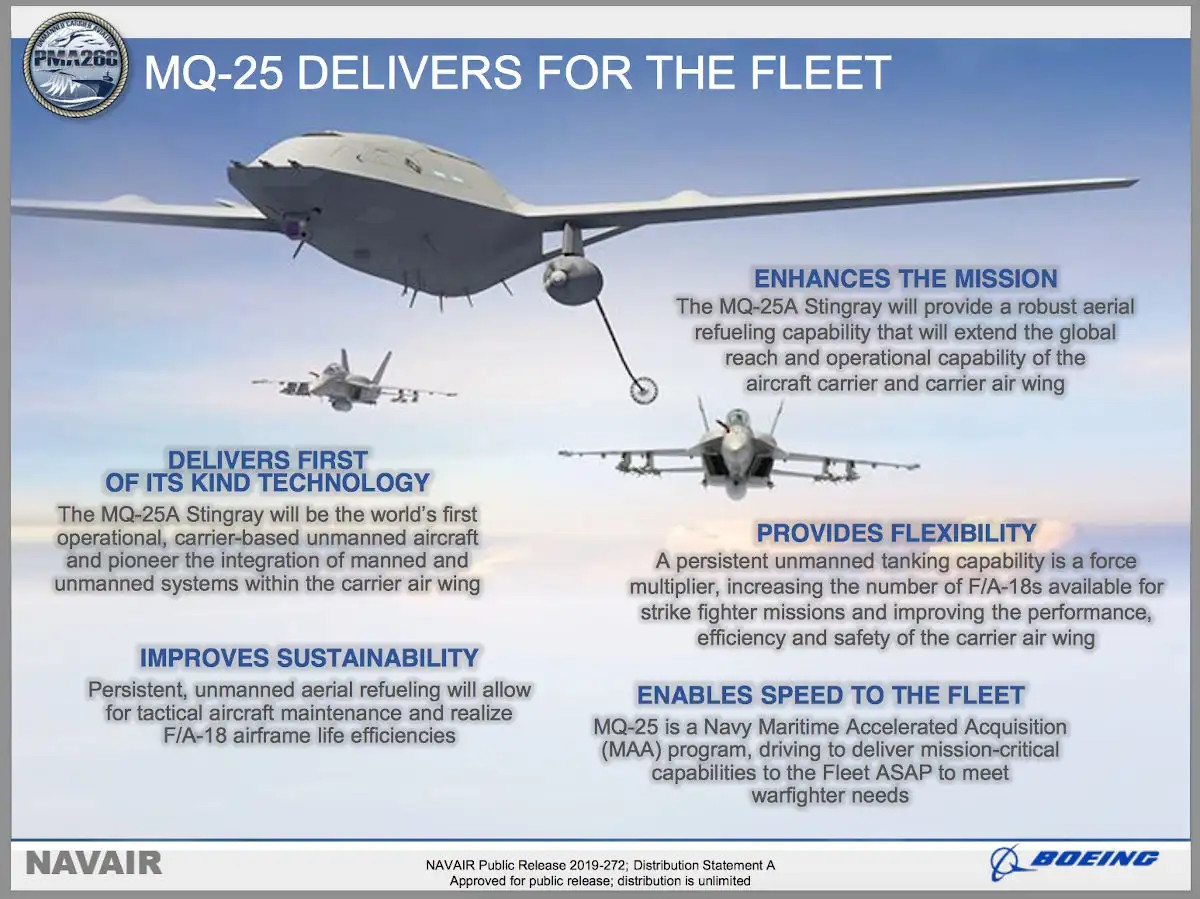
For actual deployments, a single detachment will be attached to the assigned carrier airborne early warning squadron within the carrier air wing, units that presently fly the E-2C/D Hawkeye airborne command and control aircraft.
“At sea, detachments from the Stingray CBUAS squadron will leverage personnel and maintenance administration as well as chain of command representation of the VAW [carrier airborne early warning] squadron with the CVW [carrier air wing],” the environmental assessment report notes. “Co-locating Stingray CBUAS squadrons with VAW squadrons ashore is important due to the synergies and efficiencies of the two codependent communities.”
It has already been established that the Navy’s Airborne Command & Control Logistics Wing (ACCLOGWING), which presently oversees the service’s E-2 Hawkeye and C-2 Greyhound fleets, the latter of which is headed for retirement in the coming years, will also be in charge of the Stingrays. The service had already revealed that the Hawkeye and Stingray communities would be particularly heavily tied together going forward, including the cross-training of E-2 crews as MQ-25 operators.
Last month, Navy personnel from Air Test and Evaluation Squadron One (VX-1) and Air Test and Evaluation Squadron 23 (VX-23) traveled to Boeing’s facilities in St. Louis Missouri to do three days of simulated training relating to operating the MQ-25. VX-1 and VX-23, which are both based at Naval Air Station Patuxent River in Maryland, are responsible for testing and evaluating of various aircraft and helicopters, including unmanned platforms.
Among the naval aviators that made the trip was Lieutenant Venus Savage, the MQ-25 assistant operational test director for VX-1 and an MQ-25 air vehicle operator (AVO), who was spotted at Boeing’s St. Louis’ offices wearing a Carrier Airborne Early Warning Squadron 125 (VAW-125) patch, further underscoring the burgeoning relationship between those two communities.
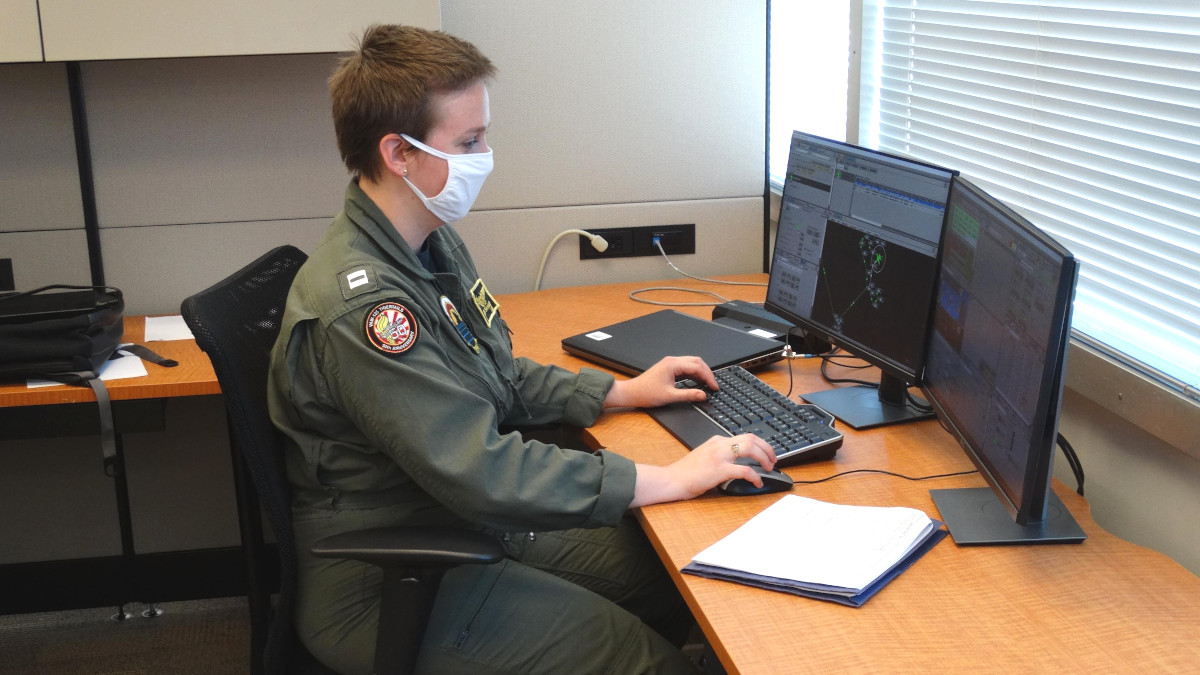
“Especially for operational test, we’re lucky to be involved this early in the program,” Savage said in a statement. “It helps when you get that side information from an experienced AVO that adds to what’s in the documentation. We were able to ask detailed questions and get clarification on what the checklists and commands are and they let us know what to expect from the air vehicle. It helps ingrain it in your memory because it’s more than just book learning.”
Pictures of the training that Navy released also notably showed a desktop computer-based control interface that is indicative of the planned semi-autonomous concept of operations for the MQ-25. Of course, it’s not exactly clear how representative these simulators will be of the final ground control station design.
Boeing has also been conducting flight testing of an MQ-25 demonstrator drone, also known as T1, since September 2019. So far, it has flown 30 hours, in total. It is presently undergoing additional ground testing following the integration of an underwing buddy refueling store earlier this year.
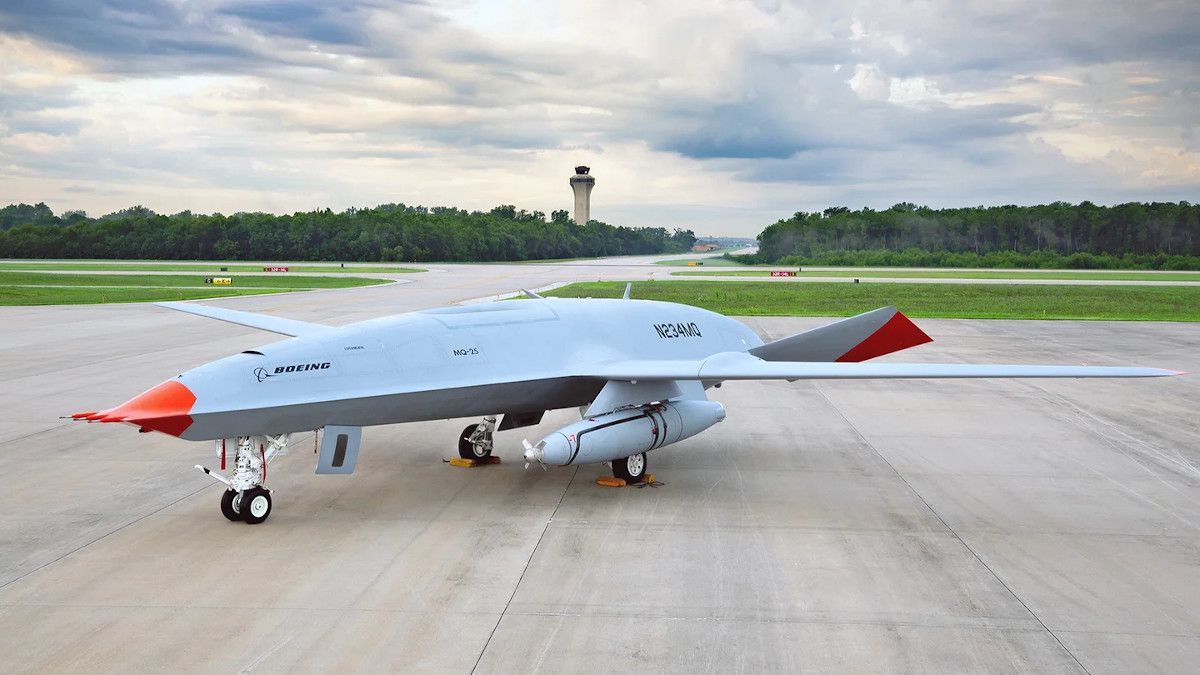
The company is also under contract to build four Engineering Development Model (EDM) prototypes, with the goal of delivering the first one to the Navy next year. The service’s present plans call for the acquisition of a fleet of at least 72 MQ-25As.
Thanks to this recent environmental assessment, we now have a much better understanding of how the Navy plans to organize and employ its future Stingrays, which are set to dramatically alter how its carrier air wings operate in the future.
Contact the author: joe@thedrive.com
